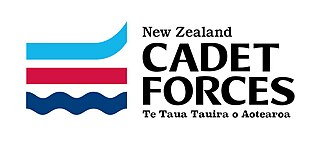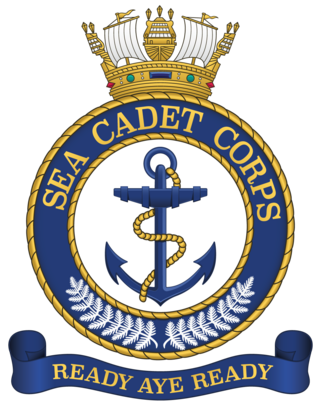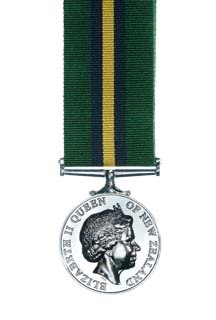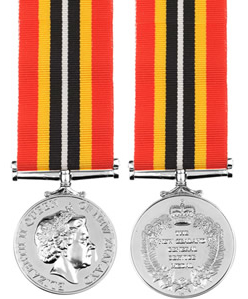
Flight sergeant is a senior non-commissioned rank in the Royal Air Force and several other air forces which have adopted all or part of the RAF rank structure. It is equivalent to a staff sergeant or colour sergeant in the British Army, a colour sergeant in the Royal Marines, and a chief petty officer in the Royal Navy, and has a NATO rank code of OR-7. In the RAF, flight sergeant ranks above chief technician and below warrant officer.

The New Zealand Air Training Corps is one of the three corps in the New Zealand Cadet Forces (NZCF), alongside the New Zealand Sea Cadet Corps and the New Zealand Cadet Corps. It is funded in partnership between the Royal New Zealand Air Force (RNZAF) and local communities. Members are civilians with no obligation to enlist in the New Zealand Defence Force (NZDF). Should a cadet enlist, their service in the ATC cadet does not translate into higher pay, rank, or seniority.

The New Zealand Cadet Forces is a voluntary military-style training organisation for New Zealand youth between the ages of 13 and 21. Run in partnership with the New Zealand Defence Force (NZDF) and local community organisations. Through its three branches, the New Zealand Cadet Forces provide young adults with a four-year training curriculum, while a number of local, area, and national camps and courses provide further experience and qualifications. It is jointly funded by the Ministry of Defence, the Royal New Zealand Returned Services' Association, local communities, and the Associated charities belonging to each branch. Overall it is directed by Air Marshal Kevin Short, Chief of Defence Force. Cadets are not under any obligation to join the New Zealand Defence Force, however many choose to do so upon turning 18 years old.

The New Zealand Army is the principal land warfare force of New Zealand, a component of the New Zealand Defence Force alongside the Royal New Zealand Navy and the Royal New Zealand Air Force.

The King's Service Medal is a medal awarded by the government of New Zealand to recognise and reward volunteer service to the community and also public service in elected or appointed public office. It was established in 1975 and is related to the Queen's Service Order. The QSM replaced the Imperial Service Medal as an award of New Zealand.

The New Zealand Cadet Corps is one of the three corps in the New Zealand Cadet Forces, the other two being the Air Training Corps, and Sea Cadet Corps. There is no reference to the Army within the official title of the NZCC, but an army theme is used for the NZCC. All of its members, from the cadets themselves to the officers and the support committees are civilian volunteers. Members have no obligation to head into the New Zealand Defence Force (NZDF); however, some do choose to join the NZDF.
The Royal Victorian Medal (RVM) is a decoration established by Queen Victoria in April 1896. A part of the Royal Victorian Order, it is a reward for personal service to the Sovereign or the royal family, and is the personal gift of the Sovereign. It differs from other grades of the order in appearance and in the way it is worn.

The NewZealandSea Cadet Corps is one of the three corps in the New Zealand Cadet Forces, the other two being the Air Training Corps, and New Zealand Cadet Corps. It is a military-style training organisation for young people between the ages of 13 and 21. Activities include sailing, and boat work, ropework shooting and drill, amongst other activities, many of which involving the other branches of the NZCF. Cadets need to pass an annual swimming test to undertake water-based activities.
New Zealand military ranks are largely based on those of the United Kingdom. The three services have their own rank structure, with a rank equivalency that allows seamless interoperability between the services. All three services form part of the New Zealand Defence Force.

The New Zealand General Service Medal 2002 (Solomon Islands) (NZGSM 2002 (Sol)) was a New Zealand campaign medal for service in the Solomon Islands. The medal was awarded for service during Operation Purple Haze 1 and 2, Operation Zephyr, and the International Peace Monitoring Team from 2000 to 2002 and with the Regional Assistance Mission to Solomon Islands (RAMSI) from 2003 to 2013.

The Defence Force Service Medal (DFSM) is an Australian Military award given for long service by permanent members of the Australian Defence Force. It is part of the suite of defence force service awards introduced in 1982, which also included the Reserve Force Decoration and the Reserve Force Medal.

The Australian Cadet Forces Service Medal is awarded to recognise long and efficient service by officers and instructors in the Australian Defence Force Cadets. It is awarded for 15 years service. Additional clasps are issued for every 5 years additional service.

The New Zealand General Service Medal 2002 (Timor-Leste) is a New Zealand campaign medal for service in Timor-Leste during and after the 2006 East Timorese crisis between 28 April 2006 and 31 December 2012.

The New Zealand Defence Service Medal (NZDSM) is a military service medal awarded to former and current members of the New Zealand Defence Force, for qualifying service since 3 September 1945. It is expected that at least 160,000 former service personnel and more than 7,000 currently serving NZDF personnel are eligible to receive the medal.

The New Zealand General Service Medal 2002 (Afghanistan) (NZGSM 2002 (Afghanistan)) is a campaign medal of New Zealand that recognizes service in the War in Afghanistan. The Queen of New Zealand authorized the creation of a new General Service Medal for the recognition of service taking place after December 2001 with a royal warrant on 23 July 2002. Regulations to establish the NZGSM 2002 (Afghanistan) were published 16 January 2003.

The New Zealand Suffrage Centennial Medal 1993 was established by Royal Warrant on 1 July 1993. It was created to commemorate Women's suffrage in New Zealand and to recognize those New Zealand and Commonwealth citizens who had made a significant contribution to women's rights or women's issues in New Zealand. The medal was only awarded in 1993.

The New Zealand Meritorious Service Medal is a meritorious and long service award for members of the New Zealand Defence Force. Initially established on 28 April 1898 as the Meritorious Service Medal, only members of the New Zealand Army were eligible for award. In 1985, a Royal Warrant established the current criteria for the medal making all members of the Army, Navy, and Air Force eligible for the award. Members of the defence forces above the rank of sergeant, who have at least 21 years of service, and hold their service's Long Service and Good Conduct Medal are eligible for the medal. The New Zealand Meritorious Service Medal is to be replaced by the New Zealand Defence Meritorious Service Medal, though holders of the superseded medal are still entitled to continue wearing it.
The Long Service and Good Conduct Medal is a military award recognizing 14 years of exemplary and unblemished service by non-commissioned and other ranks members of the New Zealand Defence Force. Established in 1985, these medals replaced the British Long Service and Good Conduct Medals with specific versions for New Zealand. There are three version of the Long Service and Good Conduct Medal, one each for the New Zealand Army, Royal New Zealand Navy, and the Royal New Zealand Air Force.
The New Zealand Defence Meritorious Service Medal is a military award of the New Zealand Defence Force (NZDF). Established by Royal Warrant 15 October 2013, the medal may be awarded to recognize meritorious exceptional performance, commitment, or innovation. Military and civilian personnel of the NZDF are eligible for this award regardless of rank or time in service. It will supersede the New Zealand Meritorious Service Medal.
The New Zealand Police Meritorious Service Medal is a police award of the New Zealand Police. Established by Royal Warrant 15 October 2013, the medal may be awarded to recognize meritorious exceptional performance, commitment, or innovation.















